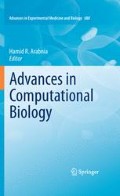Abstract
The use of computational applications in biological research is significantly lagging behind other scientific research areas such as physics, mathematics, and geology; more in silico tools are needed. The increasing complexity of biological data makes it more and more difficult for scientists to verify their hypotheses and results against existing discoveries. GNCPro is a free data integration and visualization tool for gaining comprehensive overviews of such complicated biological knowledge. In particular, GNCPro warehouses and encodes biological information as binary relationships. When represented graphically, these binary relationships take on the form of edges that connect the genes and proteins, which are represented by nodes. By using distinguishing features such as colors, shape, and opacity, GNCPro provides a stimulating visual experience in which the user can quickly identify groups of genes by annotations and the types of relationships involved. GNCPro integrates human gene expressions, regulations, gene product modifications, and interactions into one platform while delivering a simple and powerful user interface for systems biology study. Availability: http://GNCPro.sabiosciences.com.
Access this chapter
Tax calculation will be finalised at checkout
Purchases are for personal use only
References
Uetz P, Finley RL Jr (2005) From protein networks to biological systems. FEBS Lett 579(8):1821–1827.
Rajagopala SV, Uetz P (2009) Analysis of protein–protein interactions using array-based yeast two-hybrid screens. Meth Mol Biol 548:223–245.
Gstaiger M, Aebersold R (2009) Applying mass spectrometry-based proteomics to genetics, genomics and network biology. Nat Rev Genet 10(9):617–627.
Yates JR, Ruse CI, Nakorchevsky A (2009) Proteomics by mass spectrometry: approaches, advances, and applications. Annu Rev Biomed Eng 11:49–79.
Su AI et al. (2004) A gene atlas of the mouse and human protein-encoding transcriptomes. Proc Natl Acad Sci U S A 101(16):6062–6067.
Ge X et al. (2005) Interpreting expression profiles of cancers by genome-wide survey of breadth of expression in normal tissues. Genomics 86(2):127–141.
Hsiao L-L et al. (2001) A compendium of gene expression in normal human tissues reveals tissue-selective genes and distinct expression patterns of housekeeping genes. Physiol Genom 7(2):97–104.
Voelkerding KV et al. (2009) Next-generation sequencing: from basic research to diagnostics. Clin Chem 55(4):641–658.
Mardis ER (2008) The impact of next-generation sequencing technology on genetics. Trends Genet 24(3):133–141.
Lee HK et al. (2004) Coexpression analysis of human genes across many microarray data sets. Genome Res 14(6):1085–1094.
Yan X et al. (2007) A graph-based approach to systematically reconstruct human transcriptional regulatory modules. Bioinformatics 23(13):577–586.
Lim J et al. (2006) A protein–protein interaction network for human inherited ataxias and disorders of Purkinje cell degeneration. Cell 125(4):801–814.
Rual JF et al. (2005) Towards a proteome-scale map of the human protein–protein interaction network. Nature 437(7062):1173–1178.
Stelzl U et al. (2005) A human protein–protein interaction network: a resource for annotating the proteome. Cell 122(6):957–968.
Friedman A, Perrimon N (2007) Genetic screening for signal transduction in the era of network biology. Cell 128(2):225–231.
Prasad TSK et al. (2009) Human protein reference database – 2009 update. Nucleic Acids Res 37:D767–D72.
Bowers PM et al. (2004) Prolinks: a database of protein functional linkages derived from coevolution. Genome Biol 5(5):R35.
Schug J et al. (2005) Promoter features related to tissue specificity as measured by Shannon entropy. Genome Biol 6(4):R33.
Jensen LJ et al. (2009) STRING 8 – a global view on proteins and their functional interactions in 630 organisms. Nucleic Acids Res 37(Database issue):D412–D416.
Shannon P et al. (2003) Cytoscape: a software environment for integrated models of biomolecular interaction networks. Genome Res 13(11):2498–2504.
Pacifico S et al. (2006) A database and tool, IM browser, for exploring and integrating emerging gene and protein interaction data for Drosophila. BMC Bioinformatics 7:195.
Author information
Authors and Affiliations
Corresponding author
Editor information
Editors and Affiliations
Rights and permissions
Copyright information
© 2010 Springer Science+Business Media, LLC
About this paper
Cite this paper
Liu, G.G., Fong, E., Zeng, X. (2010). GNCPro: Navigate Human Genes and Relationships Through Net-Walking. In: Arabnia, H. (eds) Advances in Computational Biology. Advances in Experimental Medicine and Biology, vol 680. Springer, New York, NY. https://doi.org/10.1007/978-1-4419-5913-3_29
Download citation
DOI: https://doi.org/10.1007/978-1-4419-5913-3_29
Published:
Publisher Name: Springer, New York, NY
Print ISBN: 978-1-4419-5912-6
Online ISBN: 978-1-4419-5913-3
eBook Packages: Biomedical and Life SciencesBiomedical and Life Sciences (R0)

